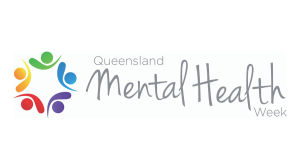Introduction:
Psychosocial hazards in the workplace refer to aspects of the job and work environment that can have a negative impact on an employee’s mental health, well-being, and social interactions. These hazards can include things like job stress, workplace violence, bullying, and harassment, among others. Managing psychosocial hazards in the workplace is essential for creating a safe and healthy work environment for employees. This whitepaper will explore some effective ways to manage psychosocial hazards in the workplace, including the benefits of implementing these strategies.
Effective Ways to Manage Psychosocial Hazards in the Workplace:
- Create a Positive Work Environment:
Creating a positive work environment is essential for managing psychosocial hazards in the workplace. This can be achieved by promoting open communication, creating a supportive and respectful workplace culture, and providing opportunities for employee development and growth. A positive work environment can help employees feel valued, motivated, and engaged, which can reduce stress and prevent psychosocial hazards from developing.
Benefits: A positive work environment can increase employee engagement, productivity, and job satisfaction, which can lead to improved performance, reduced absenteeism, and turnover rates.
- Provide Training and Support:
Providing training and support to employees is essential for managing psychosocial hazards in the workplace. This can include training on conflict resolution, stress management, and effective communication skills. Additionally, providing employee assistance programs (EAPs) can offer confidential support to employees who are experiencing mental health or personal issues. This support can help employees manage their stress and prevent psychosocial hazards from developing.
Benefits: Providing training and support can increase employee confidence and job satisfaction, which can lead to improved productivity and reduced absenteeism.
- Implement Policies and Procedures:
Implementing policies and procedures that promote a safe and respectful workplace can help manage psychosocial hazards in the workplace. This can include policies on bullying and harassment, workplace violence prevention, and a code of conduct. Having clear policies and procedures in place can help prevent psychosocial hazards from developing and create a safe and respectful workplace culture.
Benefits: Implementing policies and procedures can increase employee confidence in the workplace, reduce stress, and prevent conflicts, which can lead to improved productivity and reduced absenteeism.
- Foster Work-Life Balance:
Fostering work-life balance is essential for managing psychosocial hazards in the workplace. This can include offering flexible work arrangements, such as remote work or flexible schedules, providing paid time off, and encouraging employees to take breaks throughout the day. Fostering work-life balance can help employees manage their stress and prevent burnout, which can lead to psychosocial hazards in the workplace.
Benefits: Fostering work-life balance can increase employee engagement, productivity, and job satisfaction, which can lead to improved performance and reduced absenteeism.
Conclusion:
Managing psychosocial hazards in the workplace is essential for creating a safe and healthy work environment for employees. Creating a positive work environment, providing training and support, implementing policies and procedures, and fostering work-life balance are effective ways to manage psychosocial hazards in the workplace. Implementing these strategies can lead to improved employee engagement, productivity, and job satisfaction, as well as reduced absenteeism and turnover rates. Employers who prioritize the mental health and well-being of their employees can create a more productive and successful workplace.



